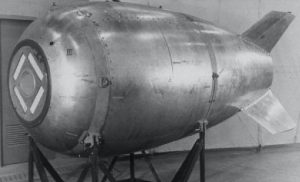
President Trump has been tearing up treaties since taking office, from halting negotiations on the TPP to NAFTA, but his latest threat to pull out of the nuclear deal, negotiated by President Reagan in the 80s, may be the biggest mistake of his disastrous presidency.
Meanwhile, while Trump and his National Security Advisor, the neoconservative firebrand John Bolton, justify their threat by accusing Russia of violating the Intermediate Nuclear Forces (INF) Treaty, the reality is that it has largely been the US that has been the aggressor through the terrifying and costly decades of the Cold War arms race that this latest treaty exit action threatens to re-ignite.
In fact, the US, which has never renounced a policy of using nuclear weapons in a first strike on America’s enemies, including Russia and China, began its planning for a nuclear attack to destroy the Soviet Union as early as 1945, when President Harry Truman’s War Department and the Pentagon began developing a series of at least nine war plans to use nuclear weapons to destroy all of Russia’s industrial centers, the goal being to preserve America’s monopoly on atomic bombs.
Those plans, which could have killed 100 million Russians, were only halted by Truman in 1949 when the USSR exploded its own atomic bomb. The only reason they weren’t launched may simply have been the lack of enough A-bombs and planes to deliver them (Pentagon generals thought over 400 were needed) .
But while the planning for a catastrophic first strike on the Soviet Union got more or less shelved once Russia had the bomb, in favor or a tenuous strategy of Mutual Assured Destruction (MAD), the US kept trying to put nuclear weapons and delivery systems close to Russia in the years that followed, even as it and the Soviet Union both developed intercontinental ballistic missiles and nuclear missile-launching submarines that could reach and obliterate each other’s heartlands.
The danger of closer basing of shorter-range ballistic missiles of course is that they give the other side much less warning time to launch a retaliatory counter-strike, thus giving the attacking nation reason to believe it could survive relatively unscathed and undermining MAD as a deterrent.
For decades, the US has kept huge numbers of both tactical (generally relatively small) and strategic (much larger) nuclear warheads overseas. According to a review of documents by the National Security Archive, published in updated form in 2006, from the early 1950s through the early 1990s — a period of four decades of Cold War — the US kept up to 13,000 nuclear weapons overseas, some at US bases, some in the joint possession of European NATO allies like Belgium, Italy, and Germany.
Of those, 7,000 were kept in Europe for potential use against the Soviet Union. Another country involuntarily hosting a large number of nukes was South Korea, with others in the Philippines and elsewhere. South Korea, at the peak in 1964, had 950 US nuclear weapons in warheads, howitzer shells for in bombs for delivery by plane, inside its borders — weapons which were for potential use against North Korea, China and Russia (the last US nukes were reportedly removed from South Korea in 1991)…
For the rest of this article by DAVE LINDORFF, which first appeared on the RTTV English-language website, please go to: https://www.rt.com/op-ed/442257-nuclear-inf-war-weapons/
